I call it ‘salad’ as that’s how Westerners recognise it but this is a simmered dish, usually served at room temperature. Hijiki Seaweed Salad can be made ahead of time and served as a side. It is also a popular food to include in a bento box.
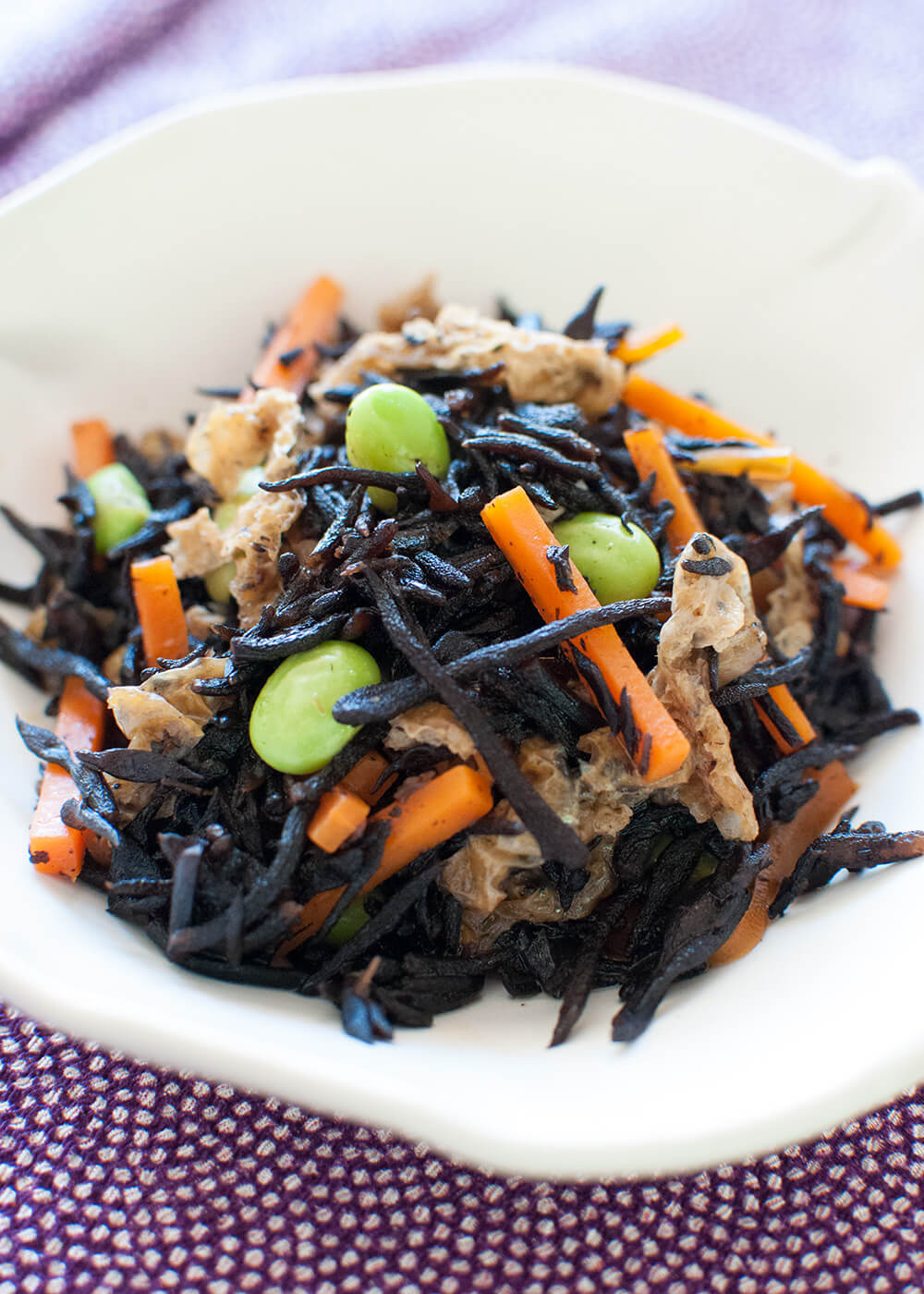
I had been debating in my head whether or not I should post the hijiki dish because of the facts which I explain below. But this is one of my favourite home cooking dishes and my children also like it. Japanese people eat it and we live long as you all know. So here it is.
Japan and neighbouring Asian countries seem to be fond of hijiki but unfortunately in Western counties, hijiki was classified as ‘potentially toxic if consumed large amounts’. This is because the levels of inorganic arsenic in hijiki are significantly higher than in other types of seaweed. For this reason, you will not find hijiki in shops in Australia.
In the case of Australia, regulations are in place to prohibit commercial importation of hijiki into the country. This is the reason you cannot find dried hijiki seaweed even at Japanese grocery shops. However, you can bring in dried hijiki from overseas as an individual.
The Japanese government’s response to this is that the average daily consumption of hijiki by Japanese people is significantly lower than the amount that could result in health risks. Several food safety agencies also acknowledge that occasional consumption of hijiki is unlikely to pose health risks but still do not recommend consumption of hijiki.
It does not make sense to highlight health risks when I am posting a hijiki recipe but I thought I should let you know why you might find it difficult to buy hijiki. I think that as long as you consume moderately, the positive aspects of hijiki outweigh the negatives. If you think about it, there are many foods and drinks that are health hazards if consumed too much.
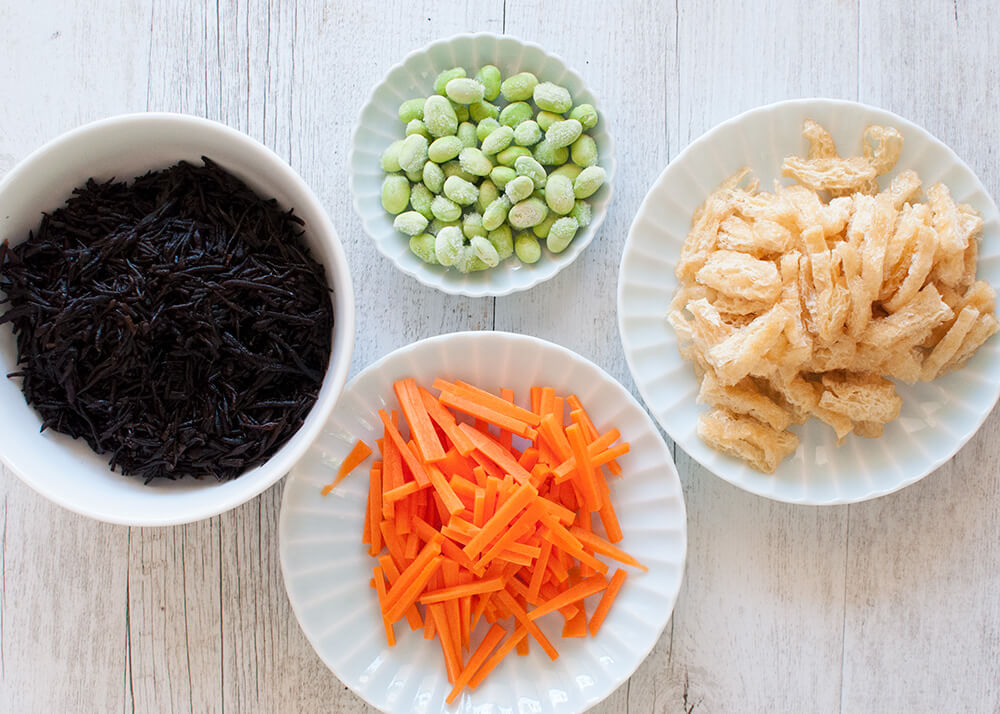
The Japanese name for this dish is ‘hijiki no nimono’ (ひじきの煮物) where ‘nimono’ (煮物) means simmered dish. Hijiki seaweed, sliced carrot and aburaage (deep fried thin tofu) are cooked in sweet soy-flavoured dashi stock.
Because it is a simmered dish and served at room temperature, hijiki seaweed salad is usually made ahead and kept in the fridge for a few days so that it can be added to the meal as one of a few side dishes to add variety to the meal.
Hijiki (ひじき) is a dark brown seaweed that grows on rocky coastlines. It is usually sold in a dried form that looks like tiny black twigs. But when you rehydrate them, they multiply in size and become dark brown seaweed pieces. See the photos below. The dried hijiki seaweed weighed only 20g (0.7oz) in this pack.
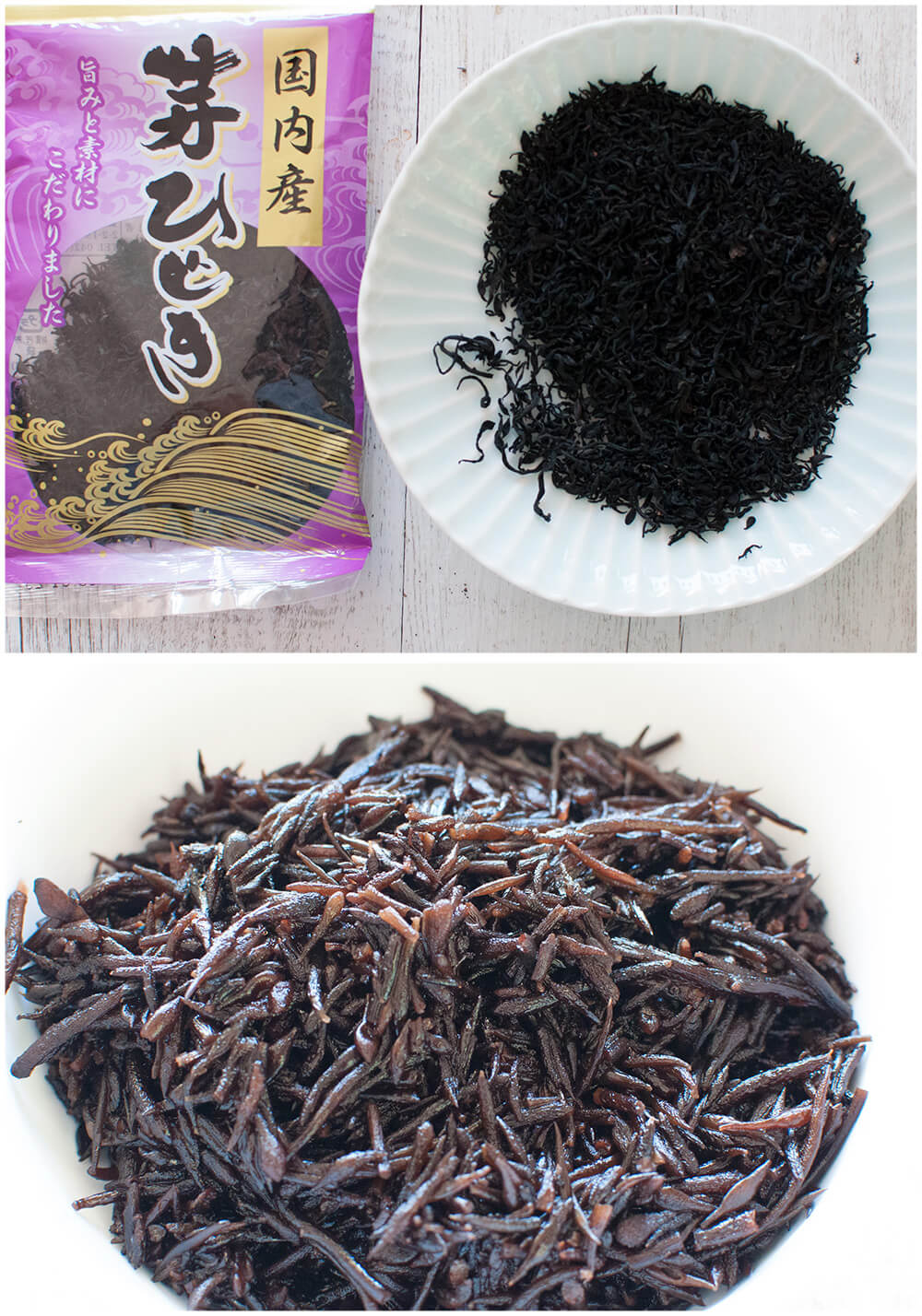
Carrot and aburaage (deep fried thin tofu) cut into small pieces are the usual vegetables cooked with hijiki. But some recipes add lotus roots and/or konyyaku. To give more colour to the dish, something green is often added to it. In my recipe, I used edamame beans but snow peas or green beans are also suitable.
The shape of the vegetables can also vary. I cut them into sticks today but I sometimes cut carrot into pie-shaped slices and aburaage into square shapes. As long as the sizes of the pieces are similar and not too small or too large when mixed with the hijiki, any shape is fine.
I sometimes add boiled soy beans too. Then it becomes a similar dish to Gomoku-mame (五目豆, Simmered Soybeans with Vegetables) but with more emphasis on the hijiki.
The simmering sauce is made of dashi stock, soy sauce, sugar and sake. After lightly sautéing the ingredients, cook them in the sauce until the sauce almost evaporates.
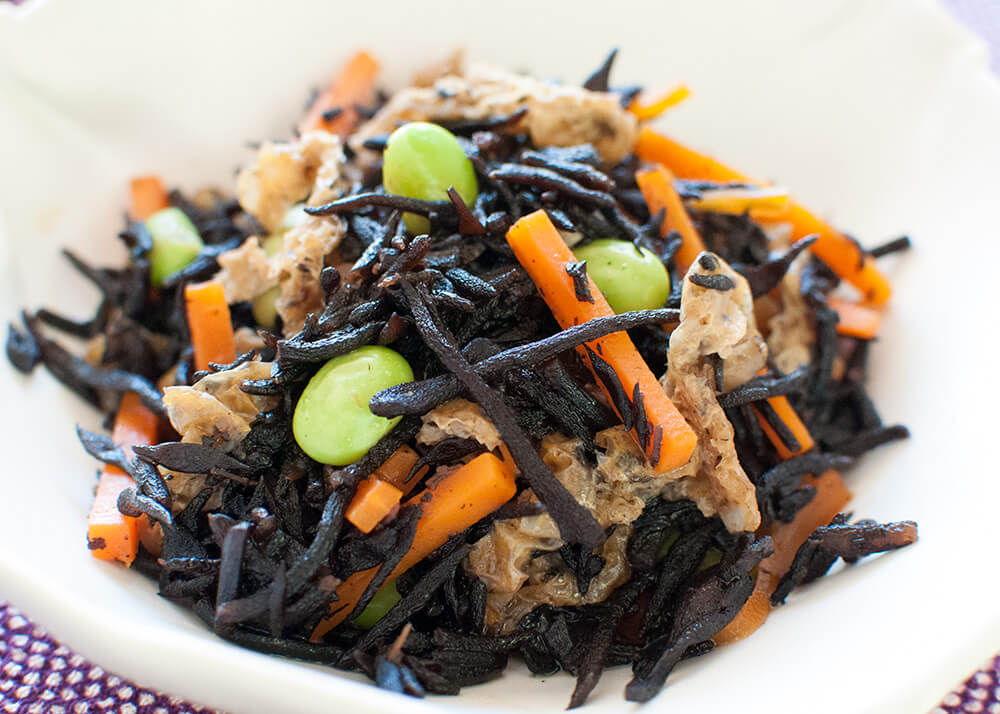
Hijiki contains a high level of dietary fibre and a wide range of minerals and other nutrients good for the human body. In Japan, it is said traditionally that ‘a person who eats hijiki lives longer,’ and along with Respect-for-Senior-Citizens Day, September 15 is designated as Hijiki no Hi (ひじきの日, Hijiki Day).
It is also said that hijiki and other seaweeds prevent hair from turning grey. Some women believed in this and consumed hijiki and other seaweed regularly and maintained thick black hair forever. I sometimes regret that I did not follow these people as my hair is 99% grey and I have to invest in hair colouring every month.
Hijiki seaweed salad keeps for 3-4 days in the fridge. You can also freeze it but make sure that the liquid in the salad is drained before freezing as it will make the salad soggy when defrosted. If you are freezing hijiki seaweed salad, do not add konnyaku to it as konnyaku does not freeze well.
Yumiko![]()
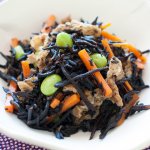
- 20g (0.7oz) dried hijiki (note 1) soaked in 1L (2pt) water for 1 hour
- 2 aburaage (fried thin tofu) (note 2)
- 80g (2.8oz) carrot cut into matchsticks, 3cm (1¼") long, 3mm (⅛") wide
- 40 g (1.4oz) frozen edamame beans (note 3)
- 2 tbsp sesame oil
- 150ml (2.7oz) dashi stock
- 2 tbsp soy sauce
- 1.5 tbsp sugar
- 1 tbsp sake
-
Drain rehydrated hijiki using a sieve and rinse few times. Drain.
-
Pour 2 cups of hot water over aburaage to remove excess oil, then squeeze water out. Cut each aburaage in half lengthwise, then cut into 5mm (3/16") wide strips crosswise.
-
Boil frozen edamame for few minutes and drain.
-
Add sesame oil to a sauce pan and heat over high heat. Add carrot and sauté for 30 seconds.
-
Then add hijiki and sauté for 30 seconds to 1 minute. Add aburaage and sauté for another 30 seconds.
-
Add the Flavouring ingredients and mix. Reduce the heat to medium and cook for 7-8 minutes until most of the liquid evaporates. Toss the pot few times while cooking so that the ingredients get coat with sauce evenly.
-
Add edamame and mix, then turn the heat off.
-
Serve in a large bowl to share or individual small bowls.
1. Hijiki is a very dark brown wild seaweed. It contains dietary fibre and wide range of minerals and other nutrients good for human body. It usually comes in a dried form which looks like tiny twigs. The colour of dried hijiki is almost black. If you are not in Australia, you can buy them at Japanese grocery stores, or perhaps even in Supermarket (I saw it on Walmart website).
Unfortunately, Australian government restricts commercial importation of hijiki therefore, you won’t be able to buy it from the shops in Australia. However, you can purchase hijiki online or bring it back from Japan for private consumption.
2. You can buy aburaage from Japanese/Asian grocery stores, They are usually sold frozen. More details about aburaage can be found in my post, Shimeji Gohan.
3. I had frozen edamame beans (without pods) in my fridge. But if you only have edamame in pods, boil them in pods and take beans out to make up for 40g (1.4oz). I think there were about 60 beans in my case so you can work out approximate number of pods you need. It’s not critical to have exact amount but I would not add any more than 40g (1.4oz).
4. Other than carrot and aburaage, you can use lotus root, konnyaku and/or boiled soya beans.
5. Hijiki seaweed salad is an excellent make-ahead dish. You can refrigerate it for 3-4 days in an air-tight container.
You can also freeze it. Drain any liquid left in the salad and divide the salad into small batches (if you wish) so that you can defrost small quantities.
Excellent recipe! Have made this repeatedly and it’s definitely worth the effort. Thank you!! 😄
Hi Olga, all my children also love this dish.